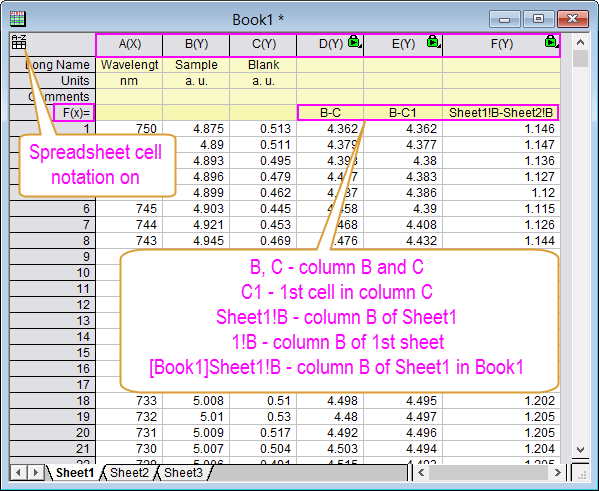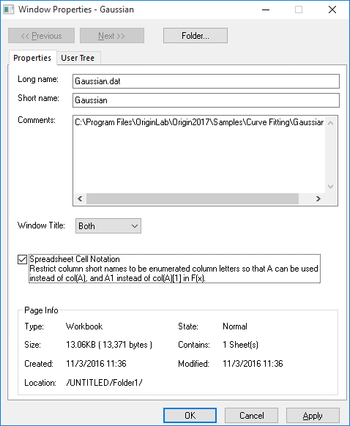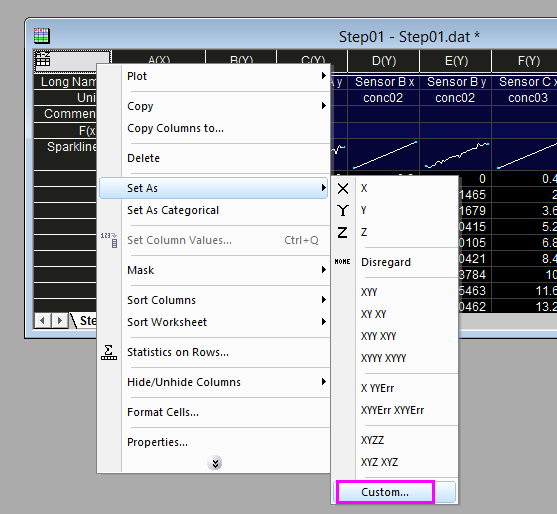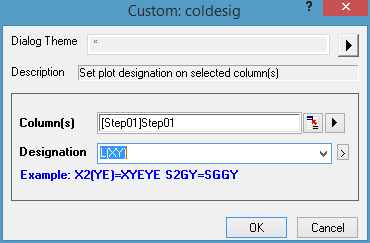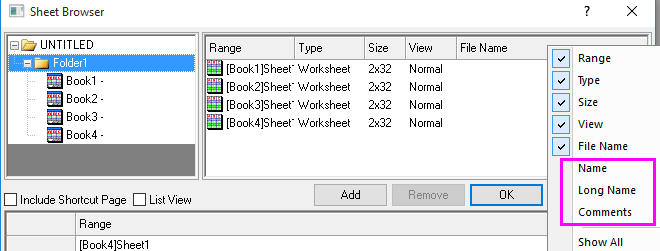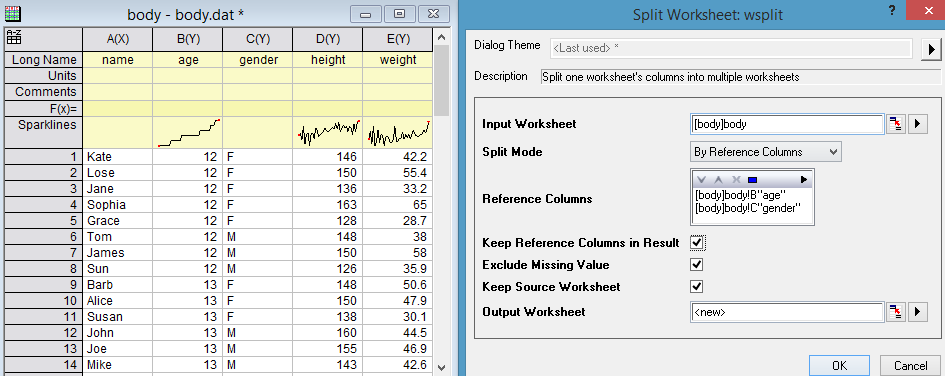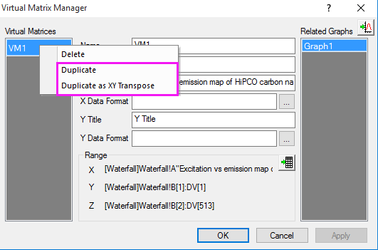Origin 2017 Worksheet
Spreadsheet Cell Notation
| JIRA | Summary | Details |
|---|---|---|
ORG-15402 S1 |
|
A new properties is added to Page object. Use page.xlcolname to control the Spreadsheet Cell Notation in current Workbook window. A new macro clrx is added to globally turn off the Spreadsheet Cell Notation in Origin. Once the macro has been run, the Spreadsheet Cell Notation will be always off even restart Origin. @RCN can be used to enables or disables spreadsheet cell notation (SCN) in the workbook.
Note that bit values are additive (e.g. @RCN = 7 means cell notation is Auto On for conforming analysis tools (4), import follows active book(2), and SCN is ON for all new worksheets from toolbar(1)). |
| ORG-14598 | Spreadsheet cell notation in Column Formula
| In F(x) cell or Formula box of Set Column Values dialog, use A3 instead of A[3] to refer to 3rd cell in column A. System variable @XCA=0 to toggle this off |
| ORG-10977 | Formula updates when related column position is changed with Column Short Name Restriction is on | System variable @DEFU = 1 to disable automatically update formula and return to the old code. |
| ORG-14364 | Improve F(x) row support | Lower case i and j refer to row number and column number respectively, while upper case I and J refer to column I and J respectively. Lower case letter, except for i and j, will be converted to its upper case automatically matching the existing column. New system variable @AUN = Auto UpperCase Name is added and default is 1 = ON. XLColName is not only available to LabTalk script but also available in OriginC now. |
Others
| JIRA | Summary | Details |
|---|---|---|
| ORG-14498 | Treat Hidden Rows as Skipped | In previous version, hidden row is treated as missing value. Now we improved it to treated as skipped by default. System variable @GMH has been changed to have 3 options: -1 (default), 0, 1. -1 means to follow the hidden rows option on Worksheet Properties dialog. Almost all analysis tools are well support hidden rows now. Please note that, when creating output, the output data will be placed in visible rows on destination sheet only. For LabTalk access, hidden row is not considered in previous version. Now we changed it to follow the @GMH value, which means hidden rows will be skipped by default. |
| Allow customize column designation by Set As context menu or Column menu. | Right click multiple columns and choose Set As: Custom... to customize the column designations E.g. L(XY) will customize columns to Label X Y X Y ... This syntax is also used in Import dialogs. () means repeat. | |
| ORG-14604 | Embed layout in worksheet | Support layout for Graph Browser so that not only graph but also layout could be added or inserted through Add Graph as Sheet, Insert Graph (into a cell) and Insert Graph toolbar button. |
| ORG-14395 | More options for displaying sheet name in Worksheet Browser | Add 3 more columns: "Name" (i.e SN), "Long Name", and "Comments", by default hidden, to better distinguish different sheets. |
| ORG-11259 | Split Worksheet by values in reference column(s) | Split worksheet by reference columns in |
| ORG-14333 | Speed up deleting columns or workbook to a large extent | Deleting thousands of (non-contiguous selected) columns or even a large worksheet no longer takes a very long time. |
| ORG-14661 | Support for Virtual Matrix duplication and transposing | Allow to duplicate or duplicate as transpose context menu in the Virtual Matrix Manager dialog |
